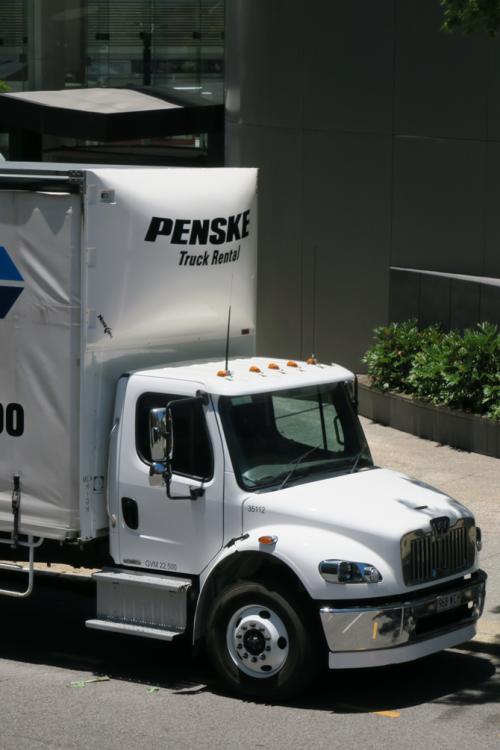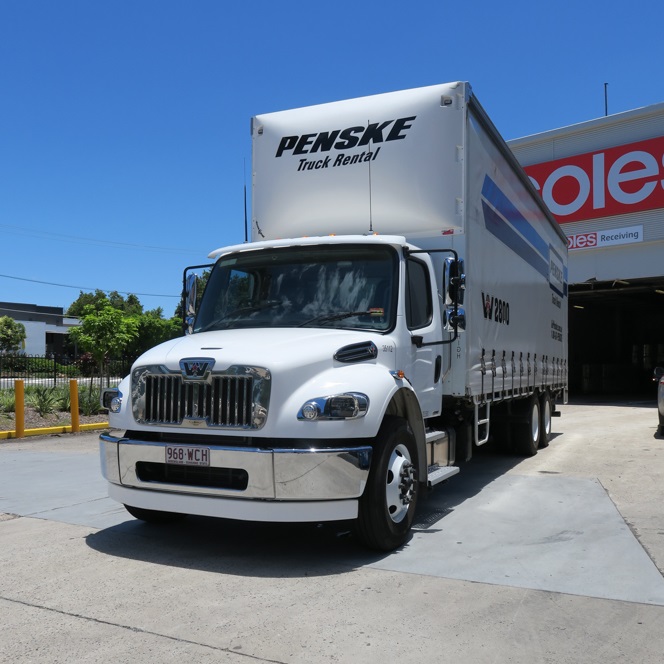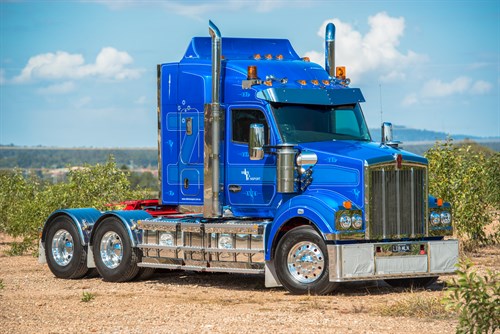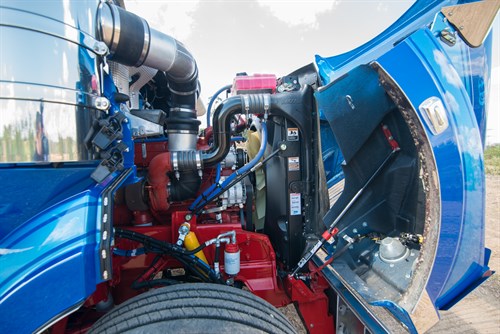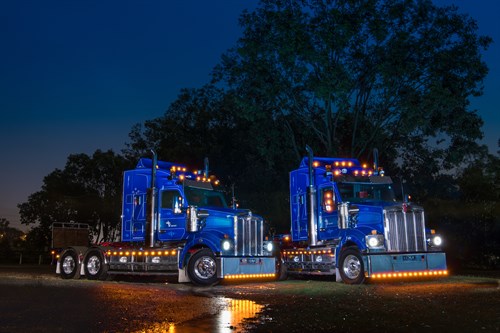
kscarbel2
Moderator-
Posts
18,935 -
Joined
-
Days Won
114
Content Type
Profiles
Forums
Gallery
Events
Blogs
BMT Wiki
Collections
Store
Everything posted by kscarbel2
-
The Australian V8-spec Value-Liner........few trucks are more attractive.
-
The Trump administration flip-flips (wusses out).......again. And this really mattered.
-
U.S. drops auto-content proposal in NAFTA talks Reuters / March 20, 2018 The U.S. government has dropped a demand that all vehicles made in Canada and Mexico for export to the United States contain at least 50 percent U.S. content, The Globe and Mail reported on Tuesday, citing sources. President Donald Trump's administration dropped the demand during the North American Free Trade Agreement negotiations in Washington last week, which included talks between Canada's Foreign Minister Chrystia Freeland and U.S. Trade Representative Robert Lighthizer, the Canadian newspaper reported. Freeland's chief spokesman declined to comment on the report and said Canada and United States continued to work well together. Canada's Prime Minister Justin Trudeau said earlier this week that Trump appeared to be "enthusiastic" about coming to an agreement on NAFTA. The quotas for U.S. content in autos have been a major bone of contention for Mexico, Canada and many companies. The Trump administration had been seeking to raise the amount of NAFTA content in light vehicles to 85 percent from 62.5 percent and secure 50 percent of the total for the United States.
-
Ford, at times, is run like a family business (above example). At other moments, it's not run like a business at all.
-
Isuzu Commercial Truck of America / March 5, 2018 . .
-
- 1
-

-
Western Star Press Release / March 20, 2018 .
-
Western Star Press Release / March 14, 2018 .
-
Volvo makes enhancements to its Mack Granite
kscarbel2 replied to kscarbel2's topic in Trucking News
-
International Launches MV Series Class 6/7 Truck
kscarbel2 replied to kscarbel2's topic in Trucking News
. . -
I haven't seen one of those in years. Those old Constellation Class dilithium crystals were so small, it's a miracle they could make warp 9. Always keep your distance.
-
Ford pursues deal to buy, redevelop Detroit's Michigan Central Station Automotive News / March 19, 2018 DETROIT -- Ford Motor Co. is in discussions to purchase the dilapidated Michigan Central Station in Detroit's Corktown neighborhood just outside of downtown. Two sources familiar with the matter said a deal for the automaker to redevelop the 500,000-square-foot former train station off of Michigan Avenue owned for decades by the Moroun family could come as soon as next month. If a deal comes to fruition, it would mark Ford's biggest step back into the city where it was born, three months after announcing that it was going to put more than 200 employees just down Michigan Avenue in The Factory at Corktown building. A redeveloped train station could house more than 1,000 workers, depending on the layout. "At this time, Ford is focused on locating our autonomous vehicle and electric vehicle business and strategy teams, including Team Edison, to The Factory in Detroit’s historic Corktown neighborhood," Ford spokesman Said Deep said Monday in a statement to Crain's Detroit Business. "While we anticipate our presence over time will grow as our (autonomous/electric vehicle) teams begin moving downtown in May, we have nothing further to announce at this time.” A redevelopment of the depot, which has been abandoned and blighted for three decades since Amtrak stopped service in 1988, would be one of the most expensive and complex local undertakings in recent history, development experts familiar with the property have said in recent months. One source familiar with Ford's pursuit of the train station said the move is aimed at building a workplace in an urban setting that can attract younger workers to the automaker. Ford company officials, including Executive Chairman Bill Ford Jr., have said talent attraction was a driving factor in Ford buying The Factory building and embedding a team of employees focused on developing the business strategy for selling electric and autonomous vehicles of the future. "Our young people love ... living and working in urban areas," Bill Ford Jr. said in January at the Detroit auto show. .
-
https://www.bigmacktrucks.com/topic/48129-the-good-old-sar/?tab=comments#comment-356276
-
Diesel News Australia / March 2018 After a big presentation in 2015, the Western Star 2800 seems to have become a soft sell truck. It had disappeared from the radar, before reappearing last year, in the Penske Truck Rental colours. Diesel News puts the conventional light heavy rigid through its paces. By bringing the Western Star 2800SS model into the Australian truck market through its own in-house rental fleet, Penske Commercial Vehicles seems to be taking a softly, softly approach to introducing the new model. The trucks may be on our streets with Penske blue stripes on the body, but they are available to the average truck buyer through Penske dealerships. The low-level entry of the new model is probably well advised. This model is sitting in the most competitive segment of the Australian truck market, one of the most competitive in the world. Up to 20 brands are fighting it out for market share here, and most of them have a model to compete as a 6×2 rigid distribution truck. The most competitive are the four Japanese brands, who all offer an array of choices at 6×2. None of them have a bonnet, though. This distinguishing feature has a lot of history in Australia and is attractive to many truck buyers. Strong growth for the Japanese manufacturers and their pragmatic-but-reliable trucks – followed by an increasing share for European trucks – has seen the traditional preference for a truly North American truck decline in some sectors of the market. What Western Star has here is a truly North American truck with a decent pedigree and adapted to meet the needs of the trucking industry in Australia. This is a US truck through and through, and it comes from a brand that has a reputation for uncompromisingly sticking to the North American truck philosophy. The 2800SS is a Western Star version of the Freightliner M2 Business Class, a truck sold in large numbers in the US. Built in the Freightliner plant at Mount Holly in North Carolina, the M2 Business Class sells in big numbers – around 50,000 each year. It is the staple 4×2 truck sold in the US medium-duty market by Freightliner, and sells as a 6×2 to a certain extent. Its main contender for sales is a similarly styled International, the Durastar, as well as the bonneted Hino from the US, the 600 Series. This 2800 is very much the same truck for the Australian market. The bonnet is different; it has been styled to suit a Western Star, with a more upright radiator grille and the large Star badge dead centre. It looks a bit beefier than its US sibling. The standard truck brought into Australia is the 6×2, with a few 4x2s added into the mix. The lazy axle is not an aftermarket add-on, but fitted on the production line at Mount Holly. In the majority of cases, the trucks have gone into the Penske Truck Rental Fleet, where they join the larger prime movers, MANs and Western Stars, all of which are sourced from Penske brands., They are, however, available for sale in Australia and have been sold to customers. “Anyone can walk into a Western Star Trucks dealership and buy a 2800SS,” says Kevin Dennis, Managing Director of Penske Commercial Vehicles. “We have stock on the ground.” It is fair to say this truck sits at the lighter end of the 6×2 segment. The Cummins ISB 6.7-litre engine puts out 280–350hp (206–239kW) at 2,300rpm and 705–976Nm (520–720 ft lb) of torque at a similar rpm level. This kind of power is a little below the levels offered by the Japanese opposition, but at an acceptable level for the kind of work it will be doing. This power and torque drives through an Allison 3000 RDS Auto gearbox. The controller is the simple push-button one, preferred by those manufacturers building a no-nonsense truck. The front and rear axles come from Detroit. This is pretty much standard across the Freightliner range in the US, but not seen so much here in Australia. .
-
Owner-Driver / March 16, 2018 "If you’re going to offer a service you’ve got to give 120 percent. If you do that you’re guaranteed to get a second beer out of your client," says Mick Smith of Milin Transport. This comment from the family-owned company founder pretty much sums up the type of bloke that Mick is – hard-working, honest and as cliché as it sounds, ‘true blue’. So what better place to check out a couple of the new Aussie-designed Kenworth T610s at work than at a true Aussie transport company. I say a ‘true’ Aussie transport company because after a sit down with Mick it’s obvious that his work ethic and attitude couldn’t be more Australian than if he was wearing a cork-swinging Akubra, eating a vegemite sandwich and telling me "that’s not a knife". Mick began Milin Transport in 2002 after more than a decade with Russell Transport, a company he speaks very highly of. His years at Russell formed the foundations of the success he has now. The professionalism displayed during his time as an employee and the relationships built are evident in the willingness of customers to get on board and support him when he put his heavy rigid crane truck on the road to start Milin Transport. "People that I’d known for a long time found out I’d gone out on my own, they started to call me, we started servicing those types of people and the company just grew and grew and grew," Mick recalls. Many of his current clients have been with the company since the beginning. It’s Micks approach to the clients that keeps them coming back. "The clients have dictated to me what they need from us, so we’ve just grown from that one crane truck to running B-doubles, road trains and all sorts of stuff all over the country. We’ll go anywhere for our clients," he adds. Mick’s dedication to the customers is equalled by his attitude to his staff around him. "I’m very lucky there as well," Mick comments when talking about the Milin Transport team. "All the people that work here are top notch, they give the business 100 percent. I’ve been fortunate there." The team though are not there by luck. Many have been with him for several years, and his office team mirrors his professionalism and customer-based focus. When it comes to drivers Mick works hard to ensure they have everything they need to get the job done. From full company uniforms, well-maintained equipment and to the most important thing of all – as much family time as possible. However, the effort by the whole team to ensure a good work-life balance is even more complicated when you look at the loads Milin specialises in. While there are a couple of standard weekly loads that Milins do, the majority of their work is, as Mick states, "a lot of machinery, a lot of weird wonderful things". This is the work Mick prefers to focus on. "It’s no different from any other work out there because we do it all the time," he says, playing down the difficulty of some of the loading challenges. "Some get a bit curly; you’ve just got to nut it out." Mick’s drivers are well versed in chaining and strapping and then delivering the loads wherever in Australia the customers need. In the years since its inception Mick’s philosophy has always been to purchase the trucks needed to do the job. There have been a variety of breeds through the Milin colours but a bonneted truck has been on the "damn it, won’t fit list". "I’ve always wanted a bonneted truck, but the 9-0s and SAR were too long," Mick explains. "We have a lot of extendable trailers and with our 12-pallet As and 22-pallet Bs we couldn’t fit one in front of them." Enter Kenworth Australia’s new T610 SAR. Micks desire to give his drivers a truck they could live in for a week, which the 610’s wider cab and 36-inch bunk does – as well as still being able to fit his 12/22 pallet B-doubles – meant he’d finally found a bonneted truck with the unlimited flexibility to work whatever job was required. Singles, B-doubles, extendables to road trains – the T610 could fit in nicely. Though the two T610s are still relatively new, the feedback from both Mick and more importantly the drivers is all positive, especially for the vision out of the cab. "The drivers say the vision out of the truck is just second to none, they can see over top of the mirrors, they can pretty much see all around," he says, complimenting the bonnet and mirror design that allows a good 180 degree view. With a large selection of Milin’s work requiring delivery to large construction sites in some of our busiest cities, vision and manoeuvrability are the two big issues faced. With that covered, the other question was how the T610s were going getting in and around the jobsites. Again, the new prime movers measured up, Mick admitting very little is lost in the turning circle. The set-back axle of the SAR means his drivers are finding the manoeuvrability of the T610s almost as good as their cab-over predecessors. Tracking fuel figures throughout the Milin fleet is always difficult, their loads and even configurations vary so much it’s hard to be spot on. On a month by month basis though, Mick is finding the new T610s are already matching the bedded-in trucks – another tick in the box. Couple that with the Cummins X15 engine fitted to both T610s and the mechanical side of the score sheet is glowing for Kenworth and Cummins as well. Cummins new X15 engine, which Mick happily describes as "the motor that just wants to keep pulling", manages to mix both the pulling power of the old Cummins Gen2 signatures with all the modern day Euro 6 carbon emission regulations without sacrificing any of the performance. Most importantly, the cooling package on the T610s means the drivers don’t have to cover the headlights before a hill so the engine doesn’t overheat at the sight of them. "On weight they heat up a bit on the big pulls but are normally sitting around the 85-90 mark," Mark says. With the trucks road train specked to 110 tonnes that means good performance and reliability for Milin Transport. Mick admits he’s not a fan of light loads, having his trucks up to weight means the gear sits on the road nicer and rides smoother. He adds that the drivers are already noticing the ride comfort increase going from the shorter wheel-based cab-overs. No surprises when I asked how the new interior sits. "They are chalk and cheese to everything Kenworth’s ever built," Mick explains. "They are more of a car inside. "With these they’ve nailed it. Not only is everything well-appointed and easy to function, it just looks good too." The appearance of the new T610s was also a change for the Milin Transport team, commonly seen in white with a blue Z stripe on the side. However, Mick worked with the team at B&K Lines & Signs in the Brisbane suburb Darra to add a different look, the blue base colour influenced by the original T610 demos. While Rocklea Truck Electrical previously fitted their custom sleeper air to all of Milin’s linehaul fleet, these were the first trucks Mick really let the company’s owner Brock McDonald add a bit more shiny-flare to. "I did pester Brock a bit, continually calling to see what stuff he had for the new 610s, ticking some boxes and crossing others." The final turnout suited Mick’s wishes of "make it shine, but not too much". He admits though that Brock did add a couple of real nice personalised pieces to the rear vents and door sills that "look just awesome!" While all these glowing reviews make these prime movers sound like an infomercial for Paccar, the fact is Mick will call a spade a spade when he needs to. "We’ve had a couple of small issues," he admits, "but all those have been fixed up by the boys at Brown and Hurley. "At the end of the day it’s a Kenworth. They’re a well-built truck, and if there is an issue it’ll be fixed under warranty." However, there was a word of warning when Mick had the final say on his new purchases. "These 610s won’t be the last!" .
-
Isuzu Trucks Australia / March 15, 2018 . . .
-
Matt Wood, Truck TV Australia / March 15, 2018 The distinctive rumble of a Mack V8 has all but disappeared from Australian highways. Matt Wood spent some time behind the wheel of two old bangers in South Australia to indulge in in some sooty E9 worship. .
-
Steve Brooks is the best truck industry journalist in the world.....bar none.
-
Steve Brooks, Truck TV Australia / March 8, 2018 As the saying goes, it’s not the size of the dog in the fight but rather the size of the fight in the dog, and therein is the essence of the Cummins X12. Small in stature, it is an engine punching well above its weight. Literally! Yet despite an extensive test program and growing demand, it’s a pocket performer still looking for a truck to call home. .
-
You're right, the Madison plant was an embarrassment. But Denton is just the opposite. ----------------------------------------------------------- For those who don't know what we're talking about: https://www.bizjournals.com/nashville/stories/2009/09/28/daily7.html https://www.nashvillepost.com/home/article/20403534/peterbilt-closing-madison-plant http://wkrn.com/2009/12/01/peterbilt-plant-closes-doors-for-good/
-
That logo was used by Sears from 1984 to 1994. That familiar engine, with the plastic fuel tank, doesn't look old to me.......it seems as though it was just yesterday that those silver Craftsman lawn & garden machines were being sold.
-
Volvo makes enhancements to its Mack Granite
kscarbel2 replied to kscarbel2's topic in Trucking News
BigMackTrucks.com
BigMackTrucks.com is a support forum for antique, classic and modern Mack Trucks! The forum is owned and maintained by Watt's Truck Center, Inc. an independent, full service Mack dealer. The forums are not affiliated with Mack Trucks, Inc.
Our Vendors and Advertisers
Thank you for your support!





